Environment
Audi News
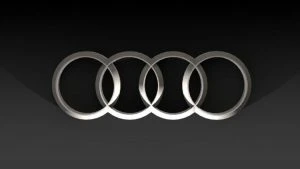
Audi has been pumping out some magnificent cars in the last few years, most of them being excellent petrol and diesel cars. What direction are they taking in the blending of hybrid technology and EV-only? The straight answer is that Audi is on the ball and have been introducing an exciting range of EV power into their brand nice and gradually, as they should.
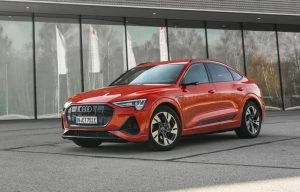
Audi e-tron S Sportback
The e-tron is, perhaps, the more widely identified model that Audi are making as fully electric cars. The e-tron is already nearing a new update, and the set of models we’re likely to see arrive sometime in 2022 are the Audi e-tron S and the Audi e-tron S Sportback. What is special about these two is that Audi e-tron S models carry two electric motors on the rear axle and one on the front and can generate a nearly instantaneous 370 kW of power and 973 Nm of torque in full boost mode for 8 seconds at a time. Because the 2 rear motors have been designed independently of one another, they can operate with the utmost precision and can help the driver power out of corners with the confidence of Audi’s special torque vectoring systems. In normal driving conditions, the front motor remains off until it is needed. When needed for ultimate performance and traction, the front electric motor flicks on and into action.
The new Audi e-tron S models boast wider bodywork than the standard models. They will be equipped with Digital Matrix LED headlights, where each light is divided into 1.3 million pixels and can be controlled with precision, opening up many new functions. As road traffic regulations allow, these digitized lights could include on-road lane markers and lightbeam functions that can dip around or below other cars. The matrix-design LED headlights come as standard, however.
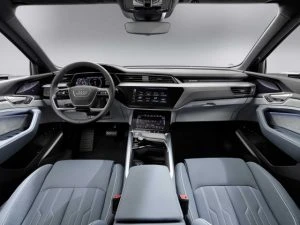
Audi e-tron S
Both of the Audi e-tron S models come standard with a 12.3-inch virtual cockpit, 3D satellite navigation imagery, predictive traffic light information, in-vehicle LTE-powered Wi-Fi for up to eight connected devices, a top-view camera, traffic sign recognition, Audi active lane assist with turn assist, Audi pre sense front, adaptive cruise assist and Audi phonebox with signal boosting capability.
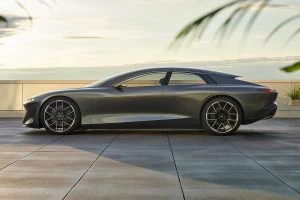
Audi Grandsphere Concept
Also hugely exciting for Audi fans is the Audi Grandsphere concept, a luxury sedan with an electric drive system. Magnificent comfort, which Audi liken to a first-class flight, will be the experience Audi is aiming for with Grandsphere. At 5.35 metres long, the Grandsphere sedan combines the luxury of private travel in ultimate comfort with a comprehensive onboard experience with Level 4 automated driving where the interior turns into a spacious sphere of experience without a steering wheel, pedals, or displays. Instead, the front of the cabin is a first-class lounging area with maximum space, more open views, and access to all the functions of a holistic digital ecosystem that the Audi Grandsphere will provide. This is a very ambitious car; however, with the rate of hybrid and EV technology becoming more and more readily available, and as we already live in an age where digitized everything is at your fingertips or voice control, the Grandsphere concept might not be too far from becoming a reality. I only hope that the fun and satisfaction of human ability and the experience of the real world will not be stifled by technology and virtuality.
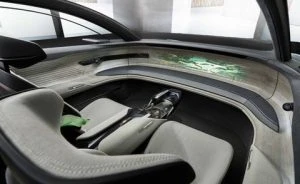
Audi Grandsphere Interior Concept
New EV SUVs
We still seem to be desiring the SUV over other shapes and styles of car. This is for reasons that I can understand; things like safety, space and ride comfort tend to be found in spades when you travel inside a decent-size SUV. Because we are likely to go through a period of history where the EV may well rule the road, are there any SUV-type EVs available now? EVs aren’t selling like hot cakes just yet, but there some EV SUVs bigger than a pint-sized Honda E that you might be interested in. It turns out that, actually, there are some pretty decent EV SUVs available to the buyer loaded with cash. As yet, they aren’t the cheapest vehicles on the planet, particularly if they are of the premium luxury brands, but it’s nice to know that if you did have the money, and wanted a spacious and desirable luxury model, they are already being sold out on the market.
Tesla has the jump on its competition, and they already have a decent wodge of EV clients under their wings. Because it was pretty much the first EV manufacturer to design and build a decent EV, it was Tesla who soaked up the early adopters of Tesla’s EV technology, and it was these buyers who were very keen to align and embrace the new EV technology early on. What is happening now, is that because other manufacturers are only now getting fully into the swing of EV technology, the keenest buyers have already been wooed and taken by Tesla, so, for instance, if you are an Audi e-tron or Jaguar I-Pace, you have a slightly harder job of getting your buyers because you have to actually entice them away from their luxury ICE vehicles and into one of their EV variants.
Tesla Model X
Let’s first give credit where credit is due, and let’s talk about the Tesla Model X EV SUV. The Model X can come with an optional six seats, the middle row boasting full-on Captain’s chairs. The five-seat Model X is the standard guise. I love the falcon-wing doors; they look so cool and make life very easy getting in and out of the car – even in tight parking spaces with as little as 11-inches on either side. Tesla’s Model X cabin is nice, big, and comfortable. Up the front, there is a big infotainment display screen on the dash. This is as big and as good as it gets in any car. The roof/ceiling is also a huge display screen, which is tinted so that the glare from the sun is minimised. The Tesla feels extremely modern but also, at the same time, quite a simple car that is fun to live with. It has funny features like a Fart Mode, which is an emissions testing mode that allows the car to perform fart sequencing and farting whenever it requires to do so. People outside don’t escape the sounds either. This feature does leave one in hysterics – you have been warned! The Tesla Model X is very different to anything else on the road, and that makes it a unique drive. Out on the road, the Tesla Model X is quick, and its ride does a pretty good job of soaking up the bumps. There are better handling cars like the Audi e-tron and Jaguar I-Pace, however.
- Twin electric motors
- 100kWh battery
- Weight: 2459 kg
- Range: Claimed at over 500 km, real world driving more likely to be around 300 km.
- 310 kW of power
- 660 Nm of torque
- Top speed: 250 km/h
- 0-100 km/h: 4.9 seconds
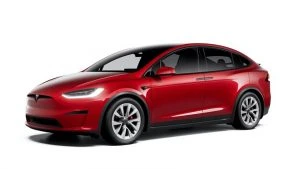
Tesla Model X
Audi e-tron
Audi’s new e-tron has five seats, all rather comfortable and impeccably crafted. The touchscreen system is classy, right up-to-date, and detailed. You do have plenty of menus to work through before finally getting to where you want to be in the infotainment set-up. On the road, the Audi e-tron is exceptionally well-sorted. It feels really tight around the corners, smooth and very quiet. Though EVs are generally heavy vehicles, the e-tron disguises its mass very well, indeed. There is plenty of well thought-out storage compartments throughout the cabin, and on a day-to-day basis this is a nice EV SUV to live with.
- Twin electric motors
- 95kWh battery
- Weight: 2490 kg
- Range: Claimed at around 385 km, real world driving more likely to be around 300 km.
- 300 kW of power
- 664 Nm of torque
- Top speed: 200 km/h
- 0-100 km/h: 5.7 seconds

Audi e-tron
Volvo XC40
Volvo’s XC40 Pure Electric Hybrid is a smaller luxury EV SUV. Safety features include autonomous emergency braking, run-off-road assist and up to Level 2 self-driving in heavy traffic situations. It’s available with AWD and uses a nice silent, smooth electric set-up. The Volvo’s version of an EV SUV is a gem. The XC40 looks and feels very modern, and the XC40’s cabin is impressively spacious. Standard equipment levels are high and include a 12.3-inch digital instrument panel with configurable EV-specific displays, panoramic sunroof, heated front power seats, and inductive charging for your smartphone. Also standard, is the full suite of Volvo safety features, including lane keep assist, blind-spot and cross-traffic alert, and rear collision alert. The 460 litres of boot space opens up to 1336 litres with the rear seats folded down flat. These can be bought new for around $85k, making this a well-priced premium luxury EV SUV that is comfortable and swift.
- Twin electric motors
- 78kWh battery
- Weight: 2158 kg
- Range: Claimed at around 418 km, real world driving more likely to be around 300/350 km.
- 300 kW of power
- 659 Nm of torque
- Top speed: 180 km/h
- 0-100 km/h: 4.7 seconds
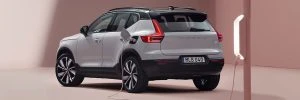
Volvo XC40 Recharge Electric
Jaguar I-Pace
In my opinion, the Jaguar I-Pace wins the EV SUV beauty contest. From every angle it looks nice, athletic, and the perfect blend of old and new design. Even with its GT lines there is a nice amount of space inside the EV Jag. To drive, the Jaguar I-Pace is wonderful. It feels very crisp through the corners and it even has a satisfying growl that flows through the speaker system as you plant your right foot and accelerate hard. Compared with its rivals, the new Jaguar I-Pace weighs in at a comparatively light 2.0 tonnes. This is a lovely EV SUV and is probably the one I’d prefer most of all the snobbish EV SUVs currently on sale.
- Twin electric motors
- 90kWh battery
- Weight: 2068 kg
- Range: Claimed at around 420 km, real world driving more likely to be around 300 km.
- 294 kW of power
- 695 Nm of torque
- Top speed: 200 km/h
- 0-100 km/h: 4.5 seconds
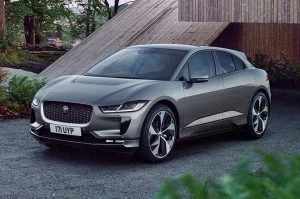
Jaguar I-Pace
BMW’s latest iX and Mercedes Benz’s EQC are some other luxury EV SUVs worth a look at. And then some other considerations that are substantially cheaper than the premium EV SUVs mentioned above would be the small Mercedes-Benz EQA and the very good MG ZS EV, Hyundai Kona and Kia Niro.
Some big reasons why you’d want to change to a EV SUV right now would be the driving smoothness, the driving silence, self-driving safety features, and the potential for saving money at the “pump”. I think it was Top Gear who recently suggested that, on average, the running costs of one of these were on a par with an equivalent petrol car capable of 73 mpg (3.2 litres/100 km). That’s if you were to do most of your charging at home and not at public charging stations.
A Case for Hydrogen-Powered Cars
What’s to like about hydrogen, and hydrogen-powered cars? We cannot see taste or even smell hydrogen, yet hydrogen makes up over 90% of matter. The stars and the sun are made up of hydrogen gas. Here on earth, hydrogen forms compounds; compounds are a mixture of elements that we find on the Periodic Table (That’s the big poster found in every science lab at school, which has 120 – or so – little squares with letters that make up the organised Periodic Table with all the known elements in our world.). Hydrogen is found in almost every living thing. Hydrogen gas is used to make chemicals such as ammonia and methane. Hydrogen is in the water that we drink (H2O). Some car manufacturers and scientists have been beavering away developing what is known as hydrogen-powered cars.
Before the car was even invented, hydrogen power had been around and in use in various forms since the 1800s. It was used widely for gas streetlamps back in the day. It was a Welshman, Sir William Robert Grove, who invented the first fuel cell back in 1839. When you use hydrogen in a fuel cell, the only thing you produce is electricity and water!
So, hydrogen-powered cars are vehicles that contain tanks of hydrogen fuel that then combine with oxygen from the air in a process that delivers power to the car for motion. The beauty of the hydrogen-powered vehicle is they produce only water as a waste product.
In a little bit more detail, a hydrogen fuel cell inside a hydrogen-powered car works like this… The fuel cell has a proton exchange membrane that uses compressed hydrogen and oxygen from the air to produce electricity. The hydrogen goes into the membrane at one end called the anode, while oxygen goes into the membrane at the other end called the cathode. A platinum catalyst, which is positioned on the anode end of the membrane, splits the hydrogen into positive protons and negatively charged electrons. The proton exchange membrane takes only the positive ions, while the electrons are fed into a circuit to make electricity. It’s this electricity which is used to drive the car’s electric motor[s]. These electric motors are what provide the driving for the hydrogen-powered car to give them speed and power!
At the cathode end, the positive ions are travelling along the membrane and combining with oxygen from the air to make water (H2O). This water drips out of the car’s exhaust/tailpipe. If you are driving your hydrogen-powered car through a desert and need some water, then you could believably drink it. Now, how green is that!
How can we produce hydrogen for vehicles? Without going into too many details here (I’ll save that for another blog), hydrogen can be produced in mass from a renewable electricity system that uses generation plants like hydro dams, solar power and wind power generators. This purpose-made hydrogen is known as green hydrogen. Australian mining company, Fortescue, has been talking with government recently regarding the creation of a hydrogen production system for Australia as early as 2023/24.
Tiwai point, which you’ll find on the Southern-most tip of New Zealand (NZ makes up Australia’s two biggest islands!), is currently being used as an aluminium smelter. The NZ government is in talks for designing and consenting to converting this smelter into a green hydrogen production plant even as early as 2023.
I think the hydrogen-powered vehicle makes a lot of (green) sense. It would cut down on the need for an endless supply of new battery packs that EVs require, which are made from preciously rare earth’s resources (e.g., lithium, nickle, cobalt…), and the energy and space to dispose of the spent battery packs would be a problem.
Of course, we would need to build up a network of hydrogen refuelling stations across Australia to power this new type of vehicle. This network-building will be easy enough and relatively cheap compared to the massive and costly EV network/upgrade. Green hydrogen fuelling stations could simply be added onto any petrol/diesel refuelling station currently in operation across Australia. This would also ease the changeover period for the general public.
If you are wondering what hydrogen-powered cars might look like, do take a look at the new Toyota Mirai, for an example.

Toyota Mirai

Where is Motorsport Currently Found on the EV Map?
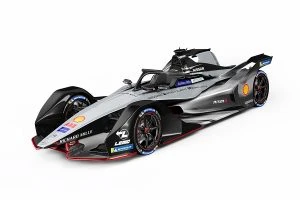
Formula E racing car.
Traditionally, the latest cutting-edge technology finds its way into road cars via the heat of motor racing. We are seeing EV racing going big quickly with the relatively recent Formula E championship, but how many motor racing championships are looking to EV technology for their future racing blue-print? As yet, EV motor racing technology hasn’t made its way into the everyday life of most average Australian motorists. Most of us still drive a motor vehicle with a healthy internal combustion engine, and most of us won’t be intending or even considering buying an expensive EV as an everyday means of transport anytime soon.
Supercars are continuing to investigate implementing hybrid technology into its racing schedule.
Formula One has had its engine regulations tweaked further with the aim of promoting closer racing and more balanced competition, as well as bringing economic and sporting sustainability to Formula 1. So, the cars are now flashier and more visually alluring, with the reshaping of the front and rear wings looking good. Formula One has a target to be net zero by 2030, and the way this is to be achieved is by removing single use plastics from its events, in collaboration with its circuits. Formula One won’t be going electric but will stay hybrid, and this has been a definite decision that the ‘powers that be’ have taken for the good of the automotive industry as they keep their racing car platforms relevant for future road cars. Formula One does not see electrification as the new world-religion, and it has stated that EVs are definitely not the only way to move forward with cars. Hybrid technology is Formula One’s current future objective, where the 2025 engine-unit will be hybrid and using 100 % sustainable fuels. Formula One sees a need to reduce the costs of this new engine-unit and platform so that it is affordable and less complex, which will open up huge potential for original equipment manufacturers (OEMs) to use in other applications for road cars.
In the World Rally Championship, current hybrid engine regulations from 2022 through to 2025 is all go, which introduces hybrid technology to the fastest cars on gravel. The hybrid technical regulations are a long way from being finalised, but initial talks have mooted a ‘supplementary hybrid system’ which controls components and software. The proposed hybrid units would allow WRC cars, which will retain the 2017 aero and engine package, to run as full EVs on transit stages, while providing a power boost on competitive special stages. Following 2025, the plan is to open up the rules to allow manufacturers to use their own electric systems for racing.
Formula E
Formula E is going from strength to strength, with Mercedes-Benz and Porsche recently joining the grid. Formula E, officially the ABB FIA Formula E World Championship, is a single-seater motorsport championship for electric cars (EVs). The series was conceived in 2011 in Paris. Formula E is the biggest motor racing event solely focussed on EV racing alone, where it is the proving ground and platform to test new ev technologies, drive development to the production line, and put more EVs on the road.
Using the sport as its showcase, the ABB FIA Formula E World Championship is sending the biggest message out to the world that may help alter perceptions and speed-up the switch to electric, in a bid to counteract the so-called “climate crisis” as well as addressing the effects of air pollution – particularly in cities. Sure, Formula E is the fastest-growing series in motorsport because its also the newest; however, it is certainly going to help put EV technology out there on the roads, even if most current EV buyers are either famous and or high-end earners.
Some electrification in motor racing is happening, where we’re seeing classes like the British Touring Car Championship, IndyCar, IMSA, NASCAR and World Rallycross Championship having some sort of hybrid or fully electric rules etched into the near-future pipeline. This is all good, but the reality is that most motorists in the general public will still be driving a car with a combustion engine, or combustion engine with hybrid technology, or a car with a combustion engine running on bio fuels in a decade because of the price of a new EV being way too steep, the lack of an EV infrastructure another, the cost of developing a country’s power grid worthy of supporting the power drain of a big EV fleet, EV battery life span, and the list goes on…
All of the many negative attributes that can be accredited to EVs aside, there are some fascinating new technological developments in hybrid and ev technology unfolding within motorsport itself.